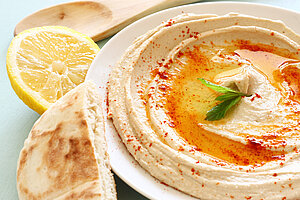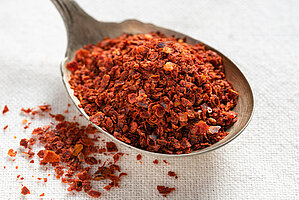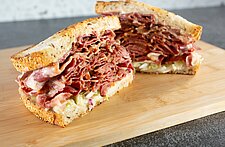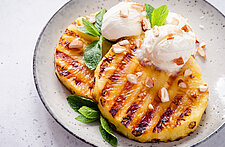 Today's consumers aren't afraid of big, bold flavors. They're more adventurous, curious about global cuisines, and ready to experience authentic flavors and dishes. Far from sticking to tried-and-true tastes, these consumers prefer to sample what's trending, creating mashups and diving in with exciting culinary experiences. It's time to explore current food trends in Middle Eastern and Mediterranean cuisine and how these flavors are evolving to meet modern palates.
Today's consumers aren't afraid of big, bold flavors. They're more adventurous, curious about global cuisines, and ready to experience authentic flavors and dishes. Far from sticking to tried-and-true tastes, these consumers prefer to sample what's trending, creating mashups and diving in with exciting culinary experiences. It's time to explore current food trends in Middle Eastern and Mediterranean cuisine and how these flavors are evolving to meet modern palates.
Evolving Palates and Shifting Perspectives
When we look at the consumers driving modern food trends, we're not surprised to see millennials and Gen Zers with consistent influence. However, while millennials have a strong hold on food and beverage trends, Gen Z is at the heart of the change. This generation is the most culturally and ethnically diverse, and that diversity has naturally led to curiosity about new foods.
Along with Indian, African, and bolder Mediterranean dishes, today's youngest adults have started craving the cultural influences of Middle Eastern flavors. Modern consumers seek fresh ingredients and healthy meals, but they also lean in more readily to plant-based proteins, vegetables, and healthy meats. In many ways, these shifting perspectives perfectly pair with trending cuisines.
 Flavor Trends
Flavor Trends
Flavor profiles have grown over time, with subtle heat and mild fragrance giving way to punchy aromas and invigorating heat. This trend has been building for a while and is only expected to continue as Gen Zers move further into the economy and deepen their purchasing power.
Looking at Middle Eastern dishes, we see pita bread and hummus as entry points, with some market share coming from dishes such as falafels and shawarma. Today, consumers think bigger and look further into a culture to see what's authentic. They want deeper nuances and richer traditions, where delicious foods show off how complex cultures can be.
Related: Tasting the Future: Demonstrating Symrise's 2023 Top Food and Beverage Trends in Action
Make It Bold
Many authentic Middle Eastern dishes feature bold flavor notes. When we look across the spectrum, we see single ingredients, rich blends, and full-flavored sauces. One of the boldest flavors comes from zhug, also called s'chug. This pesto-like Yemeni sauce has an intense flavor profile, commonly featuring fresh green chiles (or red chiles), coriander seeds, cumin, parsley, olive oil, lemon, and garlic. Sometimes, it also includes cardamom and caraway seeds.
Regardless of the exact ingredients, this bold sauce punches up flavors and serves as a delicious accompaniment for falafels, shawarma sandwiches, and many grilled vegetables and meats. Contemporary twists also see matzo ball soup seasoned with zhug and za'atar.
Trends show that interest in zhug has skyrocketed in the past few years. More than one-third of consumers are interested in foods featuring zhug, but not many have been able to sample it. Over half of surveyed restaurant operators plan to use this sauce in their upcoming menus.
Bring on the Heat
Along with bold flavors comes heat, which we find in abundance in harissa. This fiery sauce from North Africa's Maghreb region has bold heat thanks to the dried and roasted red chile peppers mixed with lemon juice, olive oil, garlic, cumin, and coriander. Harissa sauce is a thick paste that livens up many stews and soups. It also shows up as a topping for shawarma and sabich sandwiches, in couscous, and as a meat rub.
Other trends see foods topped with dried chile flakes, such as Urfa biber, Aleppo pepper, Calabrian pepper, and other regional chiles. One Mediterranean dish is neonata, a spicy Calabrian chile sauce made from young icefish cured in salt, olive oil, and dried chile peppers. The sauce has a relish-like consistency, infusing dishes with punchy heat and flavor. We see it enhancing foods like razor clams, grilled vegetables, and poached eggs.
Peppercorns are also high on the list, with bold heat coming from green, white, and pink varieties. Fresh cracked peppercorns have the most intense heat, adding complexity and a spicy kick to many dishes.
Join In-sight's community for the latest articles and reports delivered straight to your inbox. Click here to subscribe!
 Trends With Aromatic Herbs and Spices
Trends With Aromatic Herbs and Spices
Herbs and spices are where Middle Eastern cuisine shines. It features many spices, with the blends the most enduring. They liven up everything from tabbouleh salad to falafels and kebabs, merging bold flavors with meats, plant-based proteins, and healthy grains and vegetables.
Za'atar is a beloved blend featuring toasted sesame seeds, sumac, marjoram, thyme, and oregano. This deep-red spice blend adds color to many dishes and enhances them with earthy, herbaceous notes. Za'atar is commonly sprinkled onto yogurt, or labneh, mixed with olive oil to create a popular and refreshing dip. The spice blend also enhances foods such as chicken, chickpeas, pasta, eggs, potatoes, and roasted vegetables. Nearly one-half of surveyed operators use or plan to use this aromatic spice blend, along with others like ararat and baharat.
Ararat is a proprietary spice blend full of dried Urfa chile, smoked paprika, fenugreek seeds, and dried fenugreek leaves. This unique spice blend mimics the seasoned spiciness of bastirma, an air-cured beef delicacy from Turkey and Armenia. Packing plenty of heat, along with bold, slightly bitter notes and a hint of chocolate from the Urfa chiles, ararat spice enhances everything from pork shoulder to roasted cauliflower. Contemporary dishes see this smoky mixture sprinkled on fries with a splash of harissa mayonnaise.
While za'atar is more herbaceous, baharat is rich in smoky notes. It usually contains seven spices: paprika, cardamon, cumin, cloves, nutmeg, cinnamon, and coriander. Some regions, like Turkey, might include dried mint, while others in North Africa often add dried rosebuds and black pepper. We also see regional varieties with saffron, sumac, or chile pepper.
This fragrant blend has a mixture of bold flavors, and a little goes a long way. Baharat is common in meat rubs and many seafood, chicken, rice, and vegetable dishes. Modern menus also use it in fusion dishes, such as kofta kebabs and jackfruit falafel tacos sprinkled with baharat spice. Among surveyed culinary professionals, one-fifth have a planned use for baharat spice, while that number rises to nearly one-half for beverage professionals.
We also see two other spice blends rising to the top of the chart: ras el hanout and hawaij. Ras el hanout is all about warm flavors. This blend varies from region to region and is often whatever's most popular. Meaning "head of the shop," ras el hanout often features allspice, cardamon, cinnamon, ginger, chili peppers, fenugreek, mace, turmeric, cloves, and paprika. This blend is trending as a dry rub and marinade, along with more traditional uses in stews and tagines.
Hawaij is a Yemeni spice blend that comes in two forms: one for savory dishes and one for coffee and desserts. The savory blend features cumin, black pepper, cardamom, cloves, and turmeric. The one for coffee and desserts contains warm spices like cinnamon, cardamom, ginger, and cloves. When we look at culinary professionals, about one-tenth have begun using hawaij in their savory dishes. However, over one-third of beverage professionals add this warm spice blend to their products. Hawaij white coffee is one such beverage with intriguing techniques, adding roasted sesame and wheat grains to the hot drink.
Operator Preferences for Middle Eastern and Mediterranean Ingredients
As we look across the charts, we see that the most activity lies in the fine dining arena. This is where innovation occurs, with menus featuring ras el hanout, Urfa biber, suya spice, nigella seeds, baharat, and sumac. Moving to trendy restaurants and specialty grocers, we see za'atar, Aleppo pepper, caraway seeds, saffron, and black pepper.
Chain restaurants are less adventurous, preferring to stick to time-tested favorites like ginger, cumin, white pepper, turmeric, cracked pepper, and cloves. Finally, mainstream dining offers staples you can find anywhere, including cinnamon, garlic, red pepper flakes, cayenne, and cilantro.
Are you seeking more insights into Middle Eastern and Mediterranean food and beverage trends? Contact Symrise for the latest trends.
To learn more about our products and insights, get in touch with our team at Symrise today, Contact us here!






